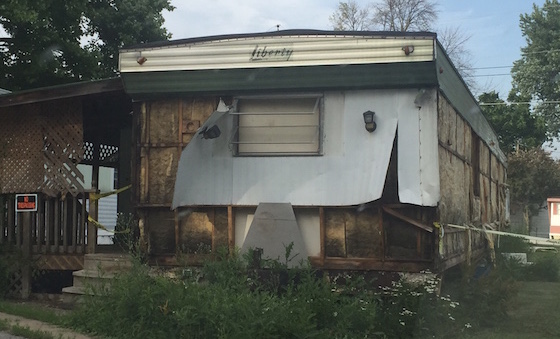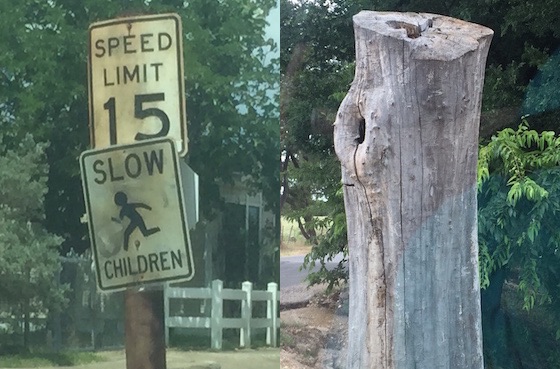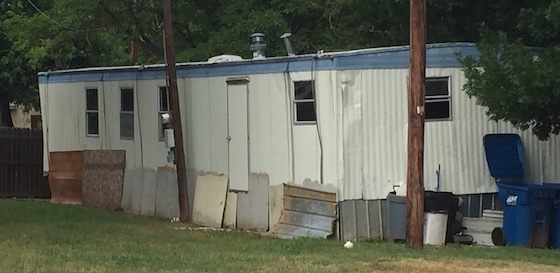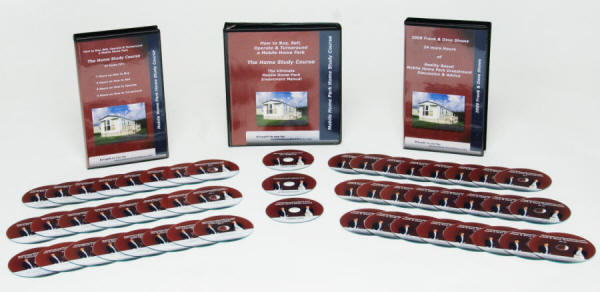You can’t own a mobile home park without, at some point in your career, looking at an older mobile home that is in significant disrepair and thinking “should I fix this thing or just tear it down?” The answer is based on a certain methodology, and getting the methodology wrong can cost you thousands of dollars.
Start with the cost to re-fill the lot
The first stop is considering the cost of filling a vacant lot in your park. If you were to buy a mobile home for $1, it would cost you at least $5,000 to bring it in, set it, connect the utilities and skirt it. So it’s a no-brainer that, financially, any home that you can fix for $5,000 or less is a no-brainer to renovate and not destroy. And, of course, you can’t buy a home for $1 that does not need probably at least $5,000 in repair before you could attract a customer. So that minimum bar for home renovation – on a strictly financial basis – is $10,000 or so, as that’s what you’ll have to spend to re-fill that lot if you tear that old home down and make the lot vacant.
Look hard at the desirability of the floor plan
What’s the point of renovating an old home that nobody wants to live in? This is the second part of the methodology: making sure that you’re not wasting money bringing back to life something that nobody wants to live in. That would be the ultimate financial blunder – spending $10,000 on the old home, and then destroying it to make way for different home for another $10,000 cost after letting the home sit vacant for a year since nobody wanted it. The old adage is “throwing good money after bad”. So before you spend a dime on renovating an old home, you have to look at it impartially and ask yourself “is this a home that I can find a tenant for?” We have found that you reach a danger zone with old homes that are 8’ and 10’ wide, and have no large master bedroom. It’s a given that tenants are used to sleeping in queen and king-sized beds, and are unlikely to be willing to drop back to a full-sized or twin bed. We have also found that anything less than two bedrooms is completely unmarketable. So before you open your checkbook, make sure that you have at least two bedrooms and one that will hold at least a queen-sized bed.
Get several opinions on the cost to rehab
Even if you have decided that the home is worth saving based on floorplan, and that you have a budget of $10,000 to bring the home back to life, how do you know that you can get the job done for that amount? Sure, you can find that one rehab guy who says “I can do this home for $7,500” but how do you know they’re right? What if it’s simply a bait and switch, because they know that once you get $7,500 into the project they can manipulate you to double that amount other than walk off from your investment. The keys to get at least three competitive bids for the renovation, and all bids must be for the completed job, not by the hour. If the guy bids $7,500 and then comes back to you at the end and says “gee, I’m sorry but it’s really going to cost $15,000” then you simply remind him that he gave you a firm contract price of $7,500 and you guess he just lost $7,500 on the project. If he does not agree, then let your attorney handle it, and pay him nothing until it’s resolved (he’ll always settle for the bid amount rather than have it tied up in court for years).
Some things should be avoided regardless of cost
Not all mobile home renovation costs are created equal. It’s one thing to replace soft spots in the floor and put on a coat of paint, and a whole different thing when you have to remove black mold. Some repairs end up with a smiling customer, and some end up in litigation. You should probably think long and hard if the home has the evidence of black mold – or any significant water intrusion. And you should probably think twice if the home has been burned, or if the electrical system shows signs of fire hazards. Remember that you are sticking a human into that home in the end, and you have more at stake than just making a few thousand bucks. A good rule is that, if you would be afraid to live in that home, then you should not get involved in remodeling it. Replacing that home may cost your $10,000, but that’s a bargain compared to a $1,000,000 lawsuit.
Don’t sell the old homes short
We cannot emphasize enough that mobile homes are completely misunderstood when it comes to life expectancy. The truth is that, properly maintained, they never die. A mobile home is a pile of lumber, metal and plastic, which is then sheathed in metal. If your contention is that mobile homes die, then all single-family homes die, too. Recently I was inside a 1960s home that looked like it had just been delivered from the factory. It’s all about the maintenance – there’s no defect in the design of a mobile home. The whole nonsense about them having a shelf life actually comes from the industry itself. For decades, mobile homes were marketed like cars and the dealers were always promoting that you “needed to trade in that old model for something new”. As long as they’re maintained properly – and even if you do a half-way decent job – a mobile home from the 50s, 60s, 70s, 80s and 90s will last as long as a brand new one.
Conclusion
A smartphone is the greatest invention ever made when it comes to mobile home park management. Use that tool relentlessly, and you will see immediate improvement in your park’s performance. And you can do it all in one day and without leaving your house. Now that’s immediate gratification!




